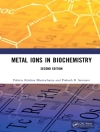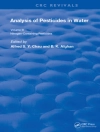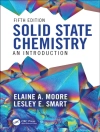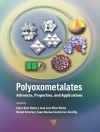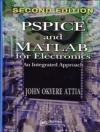This issue contains the proceedings of the ‘Porous Ceramics: Novel Developments and Applications’ and ‘Next Generation Bioceramics’ symposia, which were held on January 24-29, 2010 at the Hilton Daytona Beach Resort and the Ocean Center in Daytona Beach, Florida, USA.
The interaction between ceramic materials and living organisms is a leading area of ceramics research. Novel bioceramic materials are being developed that will provide improvements in diagnosis and treatment of medical and dental conditions. In addition, bioinspired ceramics and biomimetic ceramics have generated considerable interest in the scientific community. The ‘Next Generation Bioceramics’ symposium addressed several leading areas related to the development and use of novel bioceramics, including advanced processing of bioceramics; biomineralization and tissue-material interactions; bioinspired and biomimetic ceramics; ceramics for drug delivery; ceramic biosensors; in vitro and in vivo characterization of bioceramics; mechanical properties of bioceramics; and nanostructured bioceramics.
The ‘Porous Ceramics’ symposium aimed to bring together engineers and scientists in the area of ceramic materials containing high volume fractions of porosity, in which the porosity ranged from nano- to millimeters. These materials have attracted significant academic and industrial attention for use in environmental applications, an area where ceramics, particularly porous ones, play a key role because of their suitable properties. Therefore, a significant number of contributions, of which some are present in this volume, was devoted to the fabrication and characterization of porous ceramics for gas purification (e.g., H2 separation and CO2 separation) as well as to particulate filtration (e.g., diesel engine soot).
A leading area of ceramics research involves the development of porous ceramics for medical, dental, and biotechnology applications. For example, porous ceramics are under development for use as bone substitutes because a porous structure may enhance tissue ingrowth. Therefore, tailoring of porosity to give specific characteristics, in terms of the amount of interconnecting cells and of the cell and cell window size is required. A joint session involving participants from bioceramics and porous ceramics symposia was therefore held in order to stimulate discussion and productive interactions between the two scientific communities.
表中的内容
Preface.
Introduction.
BIOCERAMICS.
Biodegradable Rare Earth Lithium Aluminoborate Glasses for
Brachytherapy Use (J. E. White, D. E. Day, R. F. Brown, and G.
J. Ehrhardt).
Analytical Model for Prediction of Residual Stress in
Zirconia-Porcelain Bi-Layer (M. Allahkarami, H. A. Bale, and J.
C. Hanan).
Calcium-Aiuminate Based Dental Luting Cement with Improved
Sealing Properties–An Overview (Leif Hermansson, Adam
Faris, Gunilla Gomez-Ortega, Emil Abrahamsson, and Jesper
Lööf).
Bioglass/Chitosan Composite as a New Bone Substitute (P.
Khoshakhlagh, F. Moztarzadeh, S. M. Rabiee, R. Moradi, P. Heidari,
R. Ravariani, S. Amanpour).
Development and Characterization of High Strength Porous Tissue
Scaffolds (James J. Liu, Juha-Pekka Nuutinen, Kitu Patel and
Adam Wallen).
Grape Technology or Bone-Like Apatite Deposition in Narrow
Grooves (A. Sugino, K. Uetsuki, K. Kuramoto, S. Hayakawa, Y.
Shirosaki, A. Osaka, K. Tsuru, T. Nakano, and C. Ohtsuki).
Rapid Biomimetic Calcium Phosphate Coating on Metals,
Bioceramics and Biopolymers at Room Temperature with 10x SBF (A.
Cuneyt Tas).
Chemically Bonded Bioceramic Carrier Systems for Drug Delivery
(Leif Hermansson).
POROUS CERAMICS.
Low-Og Technology for Thermal Treatment of High Quality Porous
Ceramics (Hartmut Weber).
Reticulated Si C Foam X-ray CT, Meshing, and Simulation
(Alberto Ortona, Simone Pusteria, and Solene Valton).
The Effects of ß-Si3N4 Seeding and
a-Si3N4 Powder Size on the Development of
Porous ß-Si3N4 Ceramics (Daniel A.
Gould, Kevin P. Plucknett, Liliana B. Garrido, and Luis A.
Genova).
Development of Novel Microporous Zr O2 Membranes for
H2/CO2 Separation (Tim Van Gestel, Felix Hauler,
Doris Sebold, Wilhelm A. Meulenberg, and Hans-Peter
Buchkremer).
Thermal Shock Properties of Porous Alumina for Support Carrier
of Hydrogen Membrane Materials (Sawao Honda, Yuuki Ogihara,
Shinobu Hashimoto, and Yuji Iwamoto).
In Situ Processing of Porous
Mg Ti2O5 Ceramics with Pseudobrookite-Type
Structure toward Third Generation Diesel Particulate Filter
Materials (Yoshikazu Suzuki).
Aluminum Titanate Composites for Diesel Particulate Filter
Applications (Monika Backhaus-Ricoult, Chris Glose, Patrick
Tepesch, Bryan Wheaton, and Jim Zimmermann).
Weibull Analysis of 4-Point Flexure Strengths in Honeycomb
Ceramic Structures (Cordierite and Silicon Carbide) (Randall J.
Stafford and Srephen T. Gonczy).
Author Index.
关于作者
Roger Narayan is Associate Professor at the Joint Department of Biomedical Engineering of North Carolina State University. Earlier assignments have taken him e.g. to Oak Ridge National Lab. His research centers on biomedical engineering including biomaterials and nanoscale systems, intelligent systems, biomedical sensors, as well as nanoelectronics and photonics. He also has publishing experience with Journal boards.
Paolo C. Colombo is a cardiologist who specialized in treating patients with heart failure, cardiac assist device and heart transplant. Dr. Colombo is board certified in Cardiovascular Disease and in Advanced Heart Failure and Transplant Cardiology.


